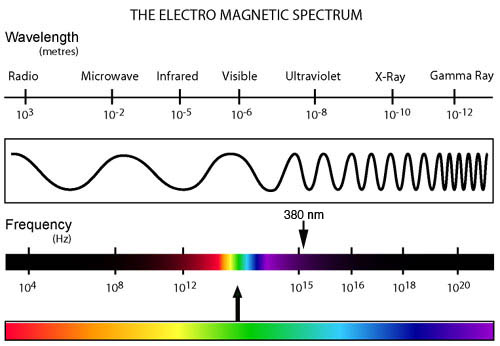A few research efforts in the field of astrobiology
Trying to find out more about the Orgeil meteorite, led to research efforts in Russia. The Brown University in US has been a cosponsor, but with the current sanctions, we will see how that progresses. Below are some terms and links that turned up.
The abstract book from The Twelfth Moscow Solar System Symposium, (12M-S3) Space Research Institute in Moscow, Russia held from October 11-15, 2021, "sponsored by: • Space Research Institute RAS • Vernadsky Institute of Geochemistry and Analytical Chemistry RAS • Brown University, USA:
has a section, page 214 to 241 in the document, under the heading astrobiology. There one finds accompanying text to oral communications and posters.
Below are titles from page 13 in the document relating to astrobiology
From the page of the conference, one can access the photo gallery and the home pages of previous conferences. To find out what they were discussing, you can download the respective abstract books.
The conference for this year will be in October, you can follow the plans here: The Thirteenth Moscow Solar System Symposium | The Thirteenth Moscow Solar System Symposium Under important dates, they say the last chance to submit an abstract is August 10, or next Wednesday.
On the page of The Ninth Moscow Solar System Symposium, they wrote:
Combining "astrobiology and virus" brought 48 hits among which few appeared relevant, but one article introduced the concept of astrovirology:
Trying to find out more about the Orgeil meteorite, led to research efforts in Russia. The Brown University in US has been a cosponsor, but with the current sanctions, we will see how that progresses. Below are some terms and links that turned up.
The abstract book from The Twelfth Moscow Solar System Symposium, (12M-S3) Space Research Institute in Moscow, Russia held from October 11-15, 2021, "sponsored by: • Space Research Institute RAS • Vernadsky Institute of Geochemistry and Analytical Chemistry RAS • Brown University, USA:
ISBN: 978-5-00015-015-3 DOI: 10.21046/12M-S3 © Федеральное Государственное Бюджетное Учреждение Науки ИНСТИТУТ КОСМИЧЕСКИХ ИССЛЕДОВАНИЙ РОССИЙСКОЙ АКАДЕМИИ НАУК (ИКИ РАН) 2021
Below are titles from page 13 in the document relating to astrobiology
14.40–17.30 ASTROBIOLOGY SESSION Conveners: Oleg KOTSYURBENKO, Elena VOROBYOVA conference hall, second floor
14.40–15.00 Sohan JHEETA Where were the molecules of life made? 12MS3-AB-01
15.00–15.15 Vladimir KOMPANICHENKO Origin of life on a planet by efficient response of prebiotic systems to high-frequency oscillations in the environment 12MS3-AB-02
15.15–15.30 Daniil MIRONOV Prospects for the use of lichens in astrobiological and astroecological research 12MS3-AB-03
15.30–15.45 Ximena ABREVAYA et al UV radiation from stellar flares: a constraint for life? 12MS3-AB-04
15.45–16.00 Eduardo CORTON et al Microbial fuel cells as extraterrestrial microbial life sensors 12MS3-AB-05
16.00–16.20 COFFEE-BREAK 16.20–16.40 Richard HOOVER et al Extraterrestrial & intraterrestrial diatoms & cyanobacteria: implications to the origin and distribution of biospheres 12MS3-AB-06
16.40–17.00 Janusz PETKOWSKI et al Phosphine and other Venusian cloud anomalies 12MS3-AB-07
17.00–17.30 POSTER SESSION, SESSION ASTROBIOLOGY 7 posters * 4 min
Richard HOOVER et al Extraterrestrial cyanobacteria and diatoms in the Orgueil (CI1) and Murchison (CM2) carbonaceous chondrites 12MS3-AB-PS-01
Oleg KOTSYURBENKO et al Succession of hypothetical microbial communities on Venus during planetary climate change 12MS3-AB-PS-02
Dmitry SKLADNEV et al Aerosol or foam – which structure of Venusian clouds is better for survival of hypothetical microbial communities 12MS3-AB-PS-03
Sergey BULAT et al Resistance of DNA(Microbial) to radiation damage on the frosty Jovian Europa surface 12MS3-AB-PS-04
Hamidreza GUILANI and Aila PORO The Necessity of Developing ML and AI for Future Astronomy 12MS3-AB-PS-05
Vladimir CHEPTSOV et al Perchlorate tolerance of soil microbial communities 12MS3-AB-PS-06
Andrey BELOV and Vladimir CHEPTSOV Resistance and metabolic activity of soil prokaryotiс communities under conditions of water deficiency: astrobiological implications 12MS3-AB-PS-07
From the page of the conference, one can access the photo gallery and the home pages of previous conferences. To find out what they were discussing, you can download the respective abstract books.
The conference for this year will be in October, you can follow the plans here: The Thirteenth Moscow Solar System Symposium | The Thirteenth Moscow Solar System Symposium Under important dates, they say the last chance to submit an abstract is August 10, or next Wednesday.
On the page of The Ninth Moscow Solar System Symposium, they wrote:
Doing a search for "astrobiology" gave 2800 hits, though many are listed with Russian titles. Another term and related to astrobiology is exobiology, but there were not many hits.Abstract Books of previous symposia are present at: https://elibrary.ru
Combining "astrobiology and virus" brought 48 hits among which few appeared relevant, but one article introduced the concept of astrovirology:
Then I attempted "virus fossilized" and was introduced to the topic of palaeontology/paleontology. If one combines astrobiology and paleontology, there was a link to a lecture in Russian: Results of bacterial paleontology and astrobiologyAaron J. Berliner, Tomohiro Mochizuki, and Kenneth M. Stedman
Published Online:1 Feb 2018 https://doi.org/10.1089/ast.2017.1649
ASTROVIROLOGY: VIRUSES AT LARGE IN THE UNIVERSE
Viruses are the most abundant biological entities on modern Earth. They are highly diverse both in structure and genomic sequence, play critical roles in evolution, strongly influence terran biogeochemistry, and are believed to have played important roles in the origin and evolution of life. However, there is yet very little focus on viruses in astrobiology. Viruses arguably have coexisted with cellular life-forms since the earliest stages of life, may have been directly involved therein, and have profoundly influenced cellular evolution. Viruses are the only entities on modern Earth to use either RNA or DNA in both single- and double-stranded forms for their genetic material and thus may provide a model for the putative RNA-protein world. With this review, we hope to inspire integration of virus research into astrobiology and also point out pressing unanswered questions in astrovirology, particularly regarding the detection of virus biosignatures and whether viruses could be spread extraterrestrially. We present basic virology principles, an inclusive definition of viruses, review current virology research pertinent to astrobiology, and propose ideas for future astrovirology research foci. Key Words: Astrobiology—Virology—Biosignatures—Origin of life—Roadmap. Astrobiology 18, 207–223.
I did not watch all of it, it has the feel of being a popular presentation for an audience that may be highly educated, but not specialists in this field. The presentation of the speaker raises questions that could lead to new discoveries, and the old academician points out there is sufficient work needed to keep his descendants busy in the search of the answers.Seminar of NCC SETI and sections 'Life and Mind in the Universe' NSA RAS
Seminar agenda: Academician Alexey Yurievich Rozanov.[...]
February 27, 2019, SAI conference hall, Moscow. site Russian SETI
Title in Russian: Итоги бактериальной палеонтологии и астробиология.



